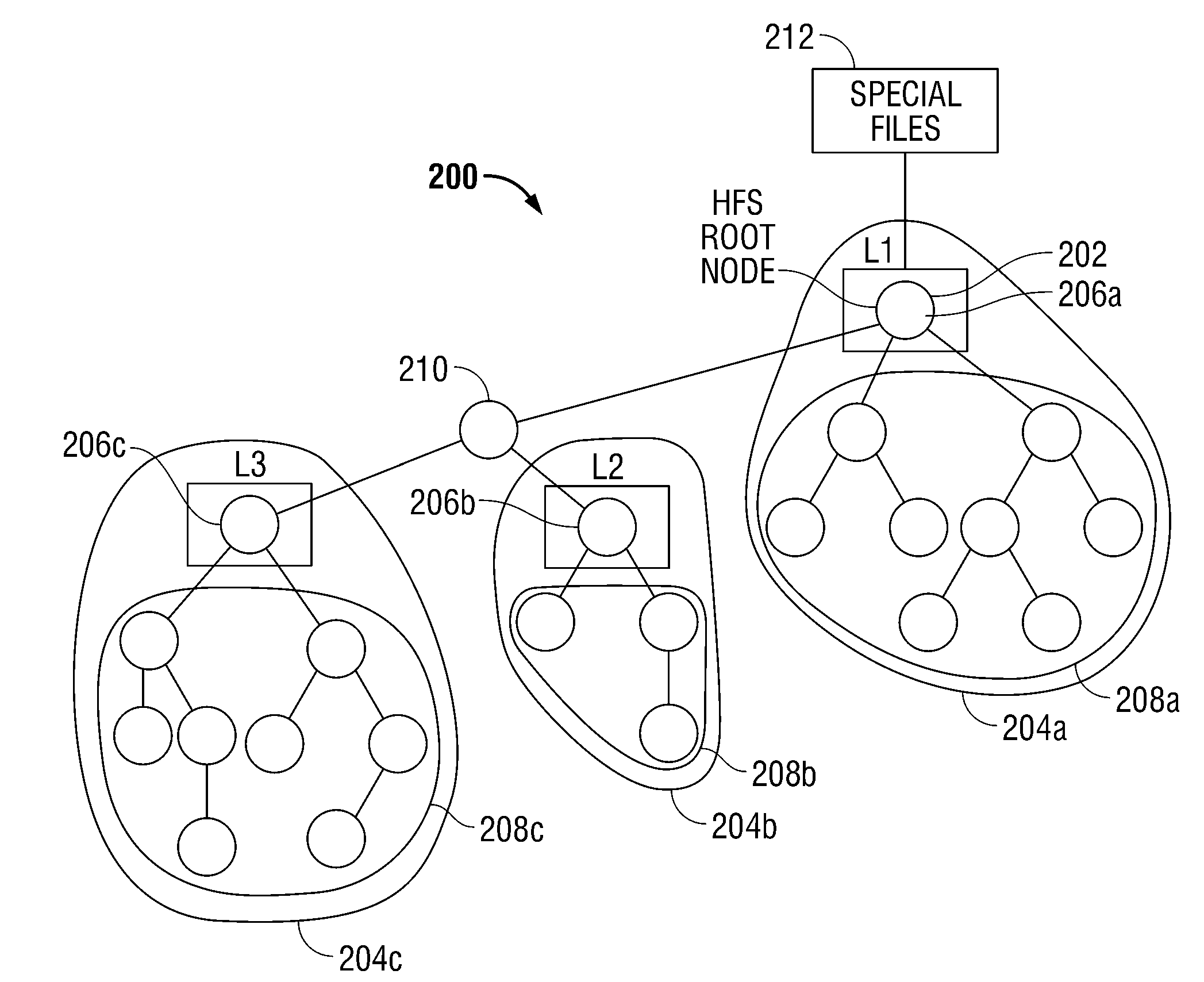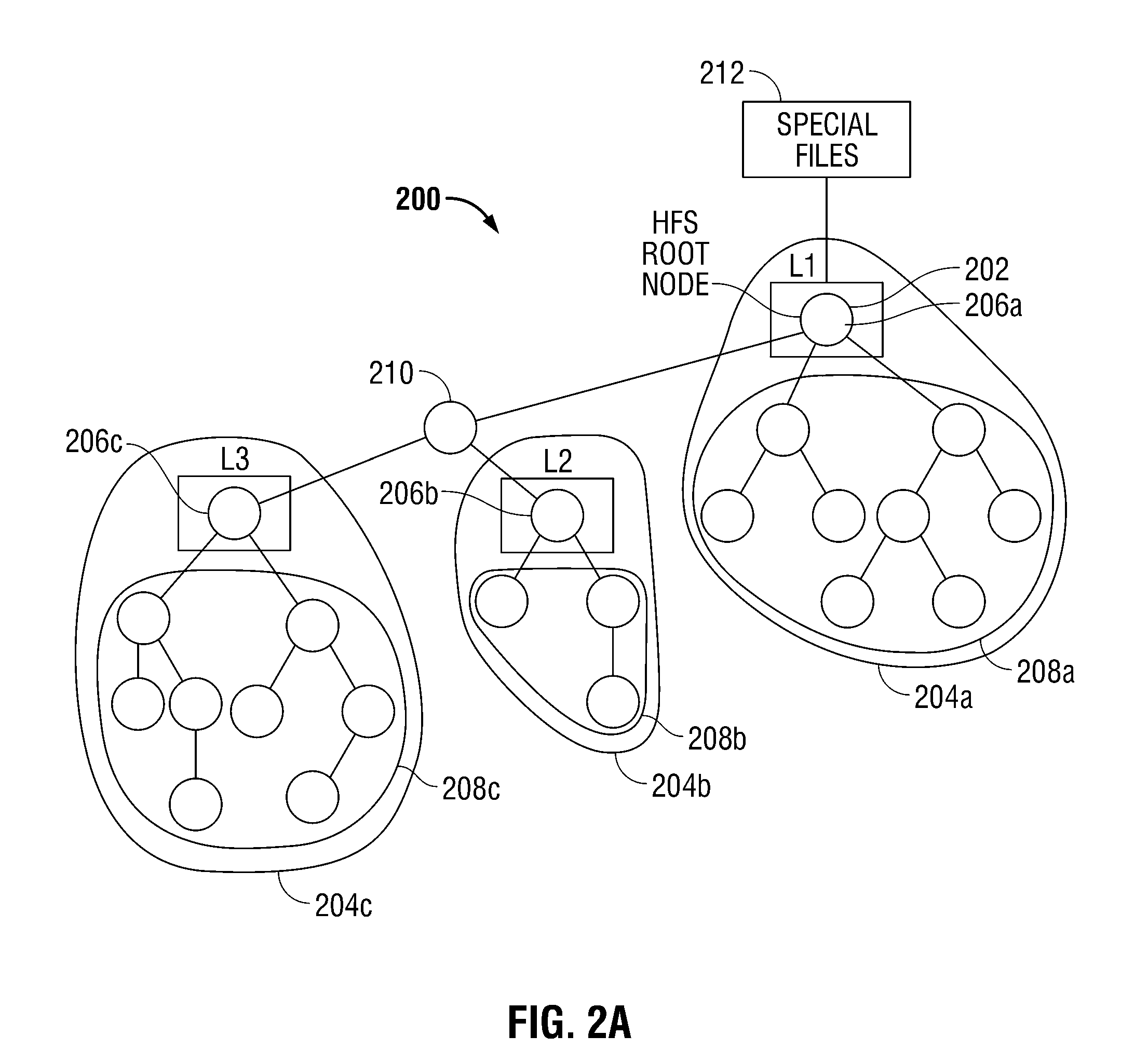Method and apparatus for exchanging sub-hierarchical structures within a hierarchical file system
a file system and sub-hierarchical technology, applied in the field of methods and apparatus for exchanging sub-hierarchical structures within a hierarchical file system, can solve the problems of inability, partially or completely, to interpret the file system, endangering the viability of the data stored therein, and inadvertent or malicious failures of software within the file system itsel
- Summary
- Abstract
- Description
- Claims
- Application Information
AI Technical Summary
Benefits of technology
Problems solved by technology
Method used
Image
Examples
Embodiment Construction
[0029]In the present invention, a method and system are provided for changing the configuration of a single hierarchical file system (HFS) by exchanging first and second sub-hierarchies of at least two sub-hierarchies included within the HFS so that before the exchange procedure the first sub-hierarchy is a working file system of the HFS, as described further below, and after the exchange procedure the second sub-hierarchy is the working file system of the HFS, where a root directory of the working file system is located at the root directory of the HFS, and where the root directory of the HFS is the top most node of the HFS, which typically does not have a parent node (directory, file or equivalent), i.e., the HFS is not included in a different hierarchical file system, and / or the root directory of the HFS is the path through which a currently executing operating system accesses the HFS. Preferably the HFS further includes special files, which may include files and / or directories, ...
PUM
 Login to View More
Login to View More Abstract
Description
Claims
Application Information
 Login to View More
Login to View More - R&D
- Intellectual Property
- Life Sciences
- Materials
- Tech Scout
- Unparalleled Data Quality
- Higher Quality Content
- 60% Fewer Hallucinations
Browse by: Latest US Patents, China's latest patents, Technical Efficacy Thesaurus, Application Domain, Technology Topic, Popular Technical Reports.
© 2025 PatSnap. All rights reserved.Legal|Privacy policy|Modern Slavery Act Transparency Statement|Sitemap|About US| Contact US: help@patsnap.com



